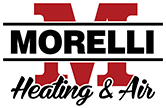Retrofitting older homes with modern HVAC systems presents a unique set of challenges and opportunities. Many older homes were not originally designed with central heating and cooling in mind, making it necessary to adapt and upgrade the existing infrastructure. In this blog post, we will explore the benefits of retrofitting older homes with modern HVAC systems, discuss the considerations and steps involved in the retrofitting process, and provide practical tips for homeowners looking to enhance comfort and energy efficiency in their older homes.
Assessing the Existing HVAC Infrastructure:
The first step in retrofitting an older home with a modern HVAC system is to assess the existing infrastructure. This involves evaluating the current heating and cooling systems, ductwork (if present), insulation levels, and the overall layout of the home. A professional HVAC contractor can perform a thorough assessment to determine the feasibility of retrofitting and identify any potential challenges.
Understanding the Benefits of Retrofitting:
Retrofitting an older home with a modern HVAC system offers numerous benefits. These include improved comfort, better energy efficiency, enhanced indoor air quality, and increased home value. Modern HVAC systems are designed to provide more precise temperature control, consistent airflow, and superior humidity management, resulting in increased comfort for occupants.
Choosing the Right HVAC System:
When retrofitting an older home, it’s crucial to choose the right HVAC system that suits the specific needs and constraints of the property. Options may include central air conditioning, heat pumps, or ductless mini-split systems. Factors such as available space, budget, and the home’s heating and cooling requirements should be taken into account when selecting the appropriate system.
Upgrading Ductwork or Considering Ductless Solutions:
In older homes, the existing ductwork may be outdated or inadequate for a modern HVAC system. Upgrading the ductwork to accommodate the new system is often necessary. Alternatively, ductless mini-split systems can be a viable option, as they provide individual zone control without the need for extensive ductwork modifications.
Insulation and Air Sealing:
Retrofitting an older home with modern HVAC systems presents an excellent opportunity to improve insulation levels and address air leaks. Proper insulation and air sealing contribute to better energy efficiency, reduced heating and cooling loads, and enhanced comfort. Adding insulation to walls, attics, and crawl spaces and sealing air leaks around windows, doors, and other openings can significantly improve the home’s overall energy performance.
Professional Installation and System Sizing:
To ensure optimal performance and efficiency, it’s crucial to hire a professional HVAC contractor experienced in retrofitting older homes. Professional installation is essential to properly size the HVAC system, ensure efficient airflow, and maximize energy savings. A skilled contractor will also ensure that the retrofitting process complies with local building codes and regulations.
Smart Thermostats and Home Automation:
Integrating smart thermostats and home automation technology can further enhance the efficiency and convenience of a retrofit HVAC system. Smart thermostats allow homeowners to remotely control and schedule temperature settings, optimize energy usage, and receive valuable insights into their HVAC system’s performance.
Retrofitting older homes with modern HVAC systems presents a fantastic opportunity to enhance comfort, energy efficiency, and overall quality of life. By assessing the existing infrastructure, choosing the right system, upgrading ductwork or considering ductless options, improving insulation, and ensuring professional installation, homeowners can transform their older homes into comfortable, energy-efficient havens. With careful planning and the expertise of a qualified HVAC contractor, retrofitting an older home can be a worthwhile investment that improves comfort and adds long-term value to the property.









Excellent! Please Rate us 5-stars
...and leave a helpful review.
Would you recommend Morelli Heating and Air?